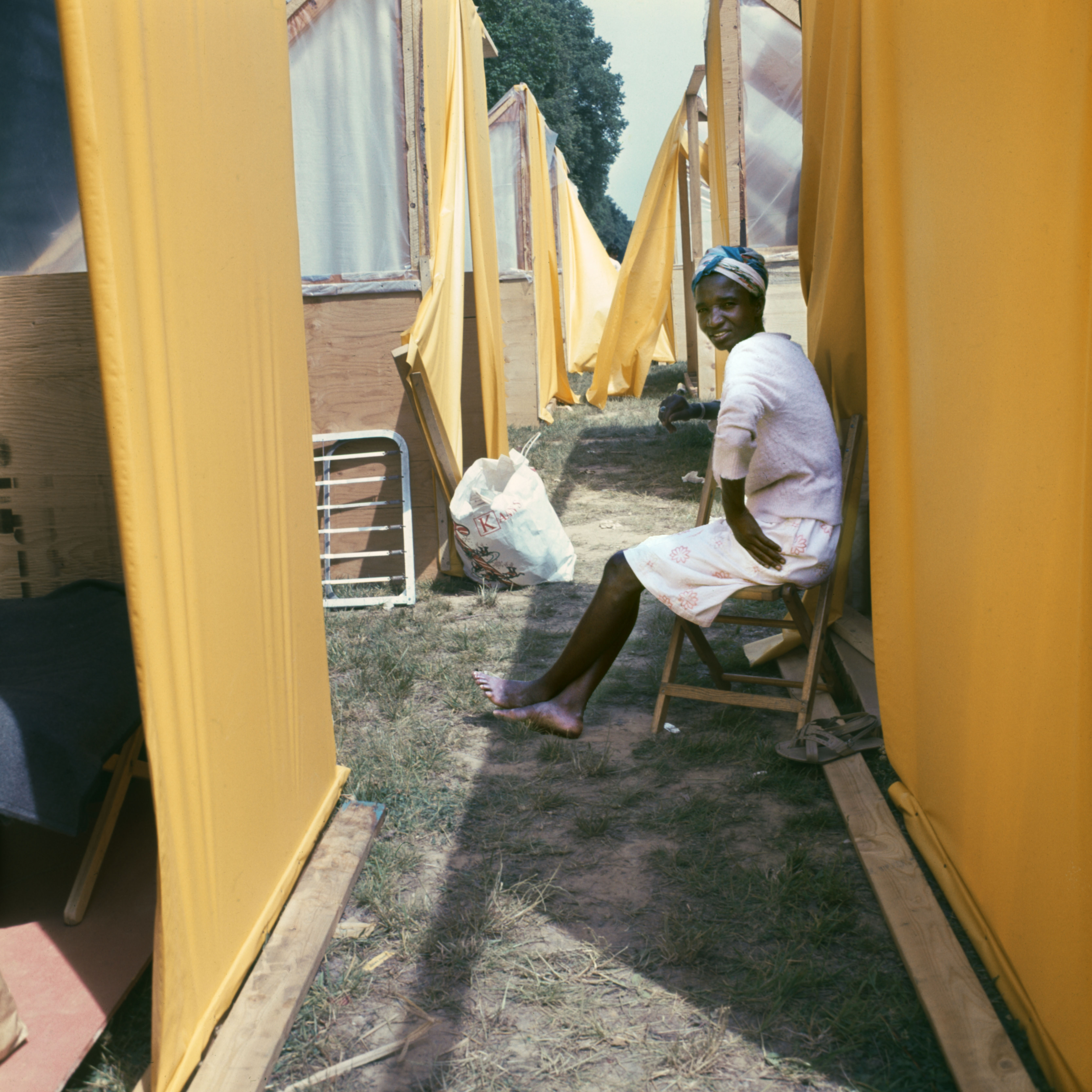Smithsonian Poster Exhibition Exploring 1968 Poor People’s Campaign On View at Ronald Reagan Washington National Airport

Woman between tents, Resurrection City, Washington, D.C., 1968
Robert Houston, born 1935
Smithsonian’s National Museum of African American History and Culture, Gift of Robert and Greta Houston, © Robert Houston
This winter, travelers at Ronald Reagan Washington National Airport can view the Smithsonian poster exhibition “City of Hope: Resurrection City and the 1968 Poor People’s Campaign.” The exhibition is on view through April 30 in the Gallery Walk located in Historic Terminal A between the Historic Lobby and the present-day ticketing lobby. “City of Hope” honors Martin Luther King Jr.’s vision for economic justice and opportunity for every U.S. citizen. It examines the Poor People’s Campaign—a grassroots, multiracial movement that drew thousands of people to Washington, D.C. For 43 days between May and June 1968, demonstrators demanded social reforms while living side-by-side on the National Mall in a tent city known as Resurrection City.
Organized by the Smithsonian Institution Traveling Exhibition Service (SITES) in collaboration with the Smithsonian’s National Museum of African American History and Culture, “City of Hope” highlights a series of newly discovered photographs and an array of protest signs and political buttons collected during the campaign. Featuring 18 posters, the exhibition can help visitors engage and contextualize the Poor People’s Campaign’s power, impact and historical significance.
Although President Lyndon B. Johnson declared a “war on poverty” in 1964, tens of millions of Americans were denied livable wages, adequate housing, nutritious food, quality education and health care. Led by King and Ralph David Abernathy, the Southern Christian Leadership Conference declared poverty a national human rights issue and organized the Poor People’s Campaign. Stretching 16 acres along the National Mall between the Lincoln Memorial and the Washington Monument, Resurrection City housed 3,000 protesters with structures for essential services like sanitation, communications, medical care and childcare. It included a dining tent, cultural center and a city hall on a “Main Street” where groups would gather.
The Poor People’s Campaign marked a key moment in U.S. history and set the stage for future social justice movements. Within months after Resurrections City’s evacuation, major strides were made toward economic equality influencing school lunch programs, rent subsidies and home ownership assistance for low-income families, education and welfare services through the Bureau of Indian Affairs, and more.
“City of Hope: Resurrection City and the 1968 Poor People’s Campaign” is on view through the Metropolitan Washington Airports Authority’s Art and Exhibits program.
SITES has been sharing the wealth of Smithsonian collections and research programs with millions of people outside Washington, D.C., for more than 65 years. SITES connects Americans to their shared cultural heritage through a wide range of exhibitions about art, science and history, which are shown wherever people live, work and play. For exhibition description and tour schedules, visit sites.si.edu.
# # #
SI-485-2019
